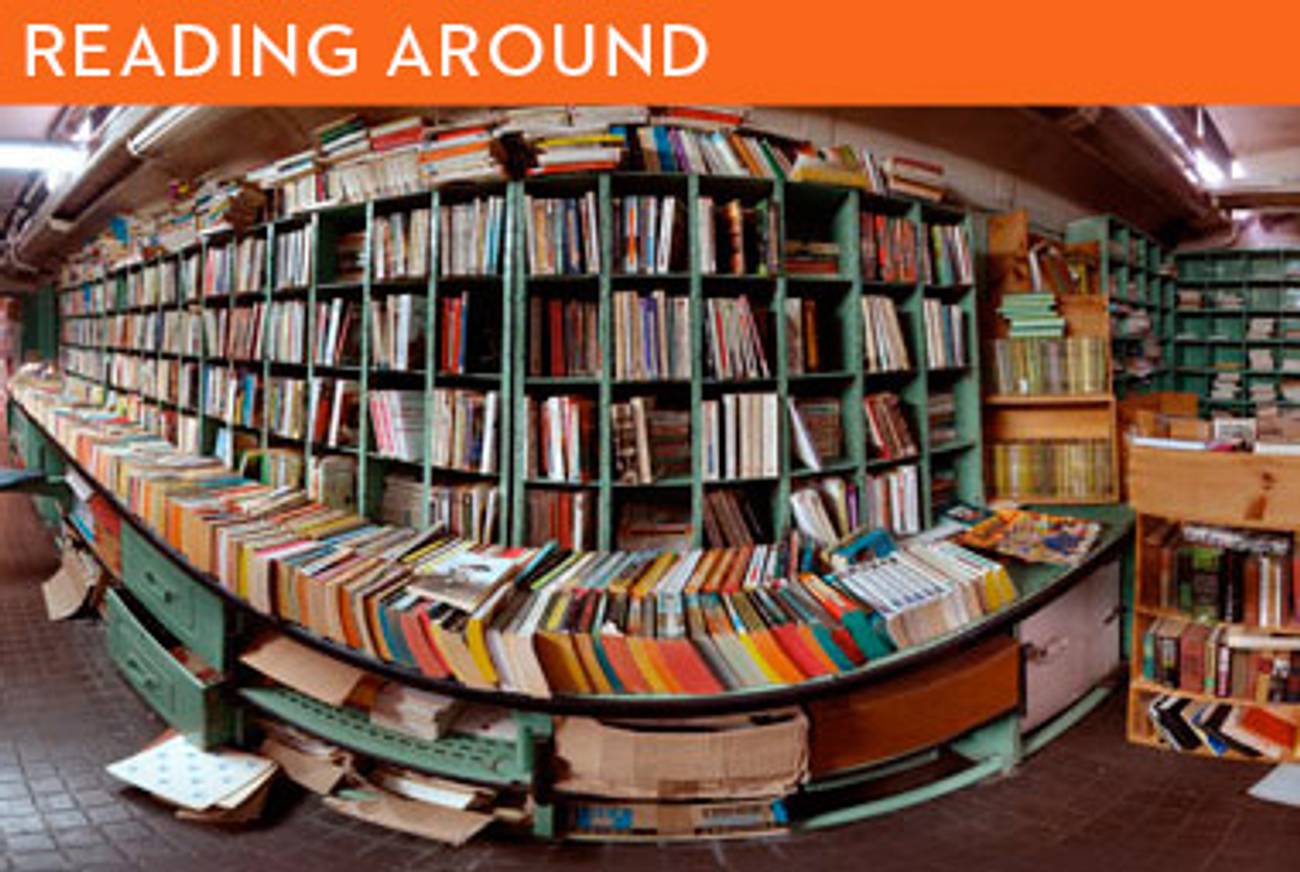On the Bookshelf
Ports of call: Jews in Istanbul and Odessa; Central Europe and Flushing, Queens




It’s a typical Black Sea story: In 1885, a girl named Eleonora Cohen, a native of the largest Romanian port city, stows away with her father, a carpet salesman, on his journey to the capital of the Ottoman empire. Once there, she winds up in the court of the sultan, who can appreciate the counsel of a precocious child genius like Eleonora, even if she is Jewish. Such is the premise, at least, of the debut historical novel The Oracle of Stamboul(Harper, February), by Michael David Lukas, who has sojourned in Istanbul himself through means more typical of our own time: a Fulbright fellowship.
***
The city in which Eleonora’s finds herself, like most imperial capitals and most of the major cities linked by the Black Sea, had its fair share of Jewish residents. The political and cultural lives of such Turkish Jews are the subjects of two books recently reprinted by a New Jersey press, founded in 2001 and “run for scholars by scholars,” which focuses on the ancient and modern Middle East. In a study originally published in 1996—The Jewish Community of Istanbul in the Nineteenth Century(Gorgias, February)—Ilan Karmi argues that reforms in 19th-cenury Ottoman policy made life easier for the Jewish community of the capital, while Gad Nassi, a dedicated advocate of the Istanbul Jewish community, includes articles by a range of scholars in his 2001 collection Jewish Journalism and Printing Houses in the Ottoman Empire and Modern Turkey(Gorgias, February).
***
If she had sailed north instead of south, Eleonora could have just as easily landed herself in Odessa, another Black Sea port where Jews made history alongside Greeks, Turks, and Romanians. Charles King memorializes this unique city in Odessa: Genius and Death in a City of Dreams(Norton, February), having consulted archival sources in several languages. King highlights famed artists such as Isaac Babel and Sergei Eisenstein, who burnished the myth of the city in their fiction and film, and he ends his book with the cultural legacy of the city’s Jews as it can be glimpsed in the Little Odessa of Brighton Beach. “They send us their Jews from Odessa,” King quotes Isaac Stern on the cultural exchange programs between the U.S. and U.S.S.R., “and we send them our Jews from Odessa.”
***
The transfer of Jewish intellectuals from Nazi-controlled Germany in the 1930s and 1940s to the United States was, understandably, more one-sided: America got some of the world’s great scientists and artists, while Germany got handed its ass by the U.S. military. Richard Bodek and Simon Lewis’ collection of essays on the period’s cultural refugees, The Fruits of Exile: Central European Intellectual Immigration to America in the Age of Fascism(South Carolina, January), treats not only the most familiar exiles of the era—Mann, Adorno, Bartók—but also the novelist Herman Broch, philosopher Walter Kaufmann, and artist Max Reinhardt.
***
As deplatziert as German intellectuals may have felt in postwar America, Yoram Kaniuk was even more out of place there: Born in Tel Aviv in 1930, he was a wounded veteran of the 1948 War of Independence when he arrived in New York, a penniless Middle Eastern teenager eager to live the life of an artist. Fictionalizing his time in Greenwich Village in the 1950s, Kaniuk’s Life on Sandpaper(Dalkey Archive, February) recounts run-ins with jazz greats Miles Davis and Billie Holiday and Hollywood stars James Dean and Marlon Brando, meanwhile demonstrating that young Kaniuk had at least one quality in common with these world-famous Americans: He could screw around just as self-destructively.
***
The young Kaniuk’s hope that through his interest in art and culture, he, as a Jew, could nonetheless find common ground with other artists, especially those from similar backgrounds of displacement, parallels the dynamics that the literary scholar George Bornstein says were at work in Jewish, Irish, and African-American culture in the century before Kaniuk arrived in New York. In The Colors of Zion: Blacks, Jews, and Irish from 1845 to 1945 (Harvard, February), Bornstein argues that these groups saw one another as inspiration, embracing “models of brotherhood that extended beyond ethnocentrism”; he points, as evidence, to Ulysses and Daniel Deronda, to Abie’s Irish Rose and The Jazz Singer.
***
Like the texts Bornstein discusses, contemporary pop culture traverses ethnic and national boundaries—but it often loses its cultural specificity in the process. Dubbed into Italian, for example, The Nanny is no longer a sit-com about an annoying Jewish girl from Flushing, Queens, but rather an annoying Italian-American who hails from the Ciociaria region. In the Italian Simpsons, meanwhile, Groundskeeper Willie becomes a Sardinian rather than a Scot. Chiara Francesca Ferrari studies this phenomenon in Since When Is Fran Drescher Jewish?: Dubbing Stereotypes in The Nanny, The Simpsons, and The Sopranos (Texas, January), demonstrating both the global reach of American pop culture, and the ease with which the Jewish markers of that culture can be excised or ignored, when that’s convenient.
Josh Lambert (@joshnlambert), a Tablet Magazine contributing editor and comedy columnist, is the academic director of the Yiddish Book Center, Visiting Assistant Professor of English at the University of Massachusetts, Amherst, and author most recently of Unclean Lips: Obscenity, Jews, and American Culture.
Josh Lambert (@joshnlambert), a Tablet Magazine contributing editor and comedy columnist, is the academic director of the Yiddish Book Center, Visiting Assistant Professor of English at the University of Massachusetts, Amherst, and author most recently ofUnclean Lips: Obscenity, Jews, and American Culture.